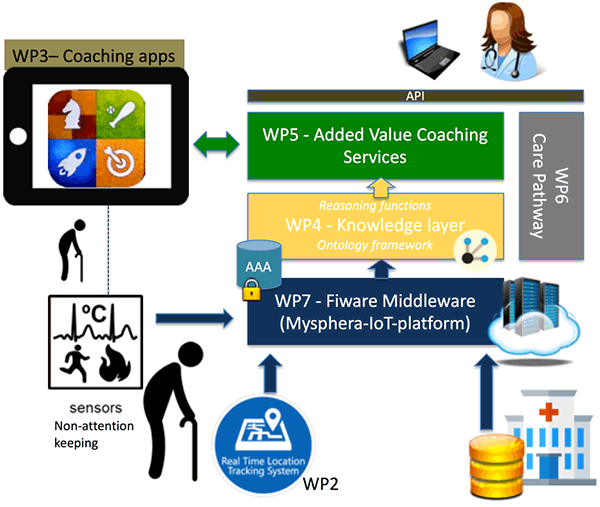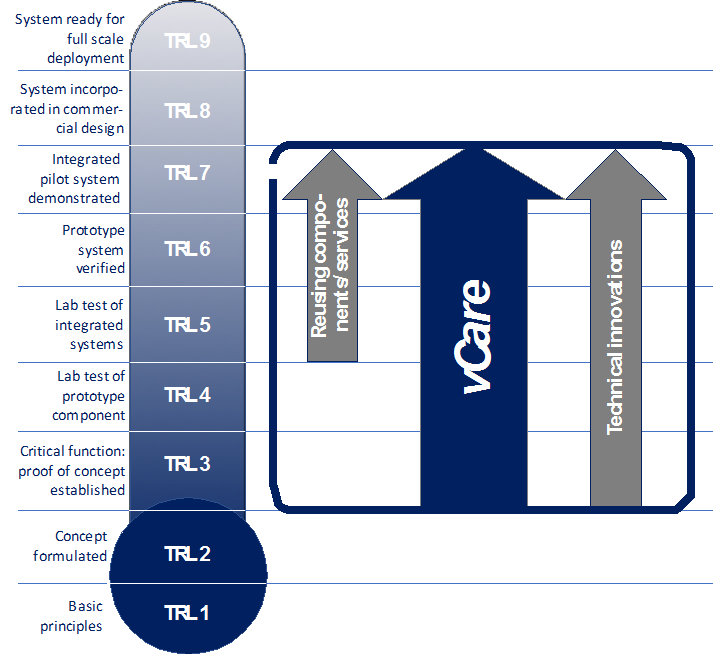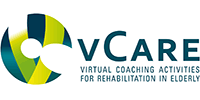The project’s ambition is to develop and validate a new ICT based virtual coaching approach for empowering and motivating people while rehabilitation in the home environment.
vCare aims for:

Technology Readiness Level (TRL)

The project’s approach requires a distinctive view on the technology readiness levels (TRLs).
Since the project focuses on integrating existing technologies rather than implementing another single, monolithic solution, the components used are based on a lab test of integrated systems (TRL 5). Further technical innovations will be developed during the process, based on technical concepts and proof of concept implementations (TRL 3). As vCare aims to conduct a small-scale pilot, the project will advance the virtual coaching solutions from the level of a proof of concept (TRL 3) to an integrated and demonstrated pilot system (TRL 7).
Technical viewpoint

Clinical perspective

Business perspective

